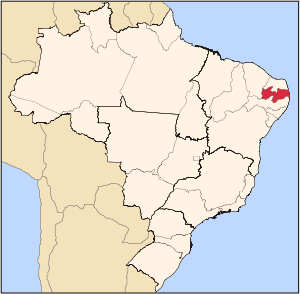João Pessoa, Paraíba
João Pessoa (Portuguese pronunciation: [ʒuˈɐ̃w peˈso.ɐ]) is a port city in northeastern Brazil, and is the capital of the state of Paraíba. It is located on the right bank of the Paraiba do Norte river.[3]
João Pessoa | |
|---|---|
Municipality | |
| Município de João Pessoa | |
 João Pessoa skyline | |
 Flag 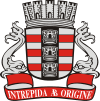 Seal | |
| Nickname(s): Sun Gate Green City | |
| Motto(s): INTREPIDA AB ORIGINE | |
 Location of João Pessoa in the state of Paraíba | |
 João Pessoa Location of João Pessoa in Brazil | |
| Coordinates: 07°05′00″S 34°50′00″W | |
| Country | Brazil |
| Region | Northeast |
| State | |
| Founded | August 5, 1585 |
| Government | |
| • Prefeito | Luciano Cartaxo (PSD) |
| Area | |
| • Municipality | 211.475 km2 (81.651 sq mi) |
| Elevation | 40 m (130 ft) |
| Population (2018 est.[1]) | |
| • Municipality | 800,323 |
| • Density | 3,800/km2 (9,800/sq mi) |
| • Metro | 1,378,000[2] |
| Time zone | UTC−3 (UTC−3) |
| Website | |

It is the state's largest city, with an estimated population of 800,323 of inhabitants (2018).[1]
The new "Estação Ciência, Cultura e Artes" (Science, Culture and Art Station),[4] located at the most eastern point of the Americas (Ponta das Seixas), is both an educational and cultural institution as well as a national landmark. The complex, inaugurated in 2008, was created by Brazilian architect Oscar Niemeyer and is one of his last projects.
The capital of Paraíba received in 2017 the title of creative city by UNESCO,[5] placing João Pessoa, as "Brazilian city of handicrafts". Besides the capital of Paraíba, another city in Latin America, it has the same title, with the same category, which is Chordeleg, in Ecuador. The recognition of the capital João Pessoa, places it on the Brazilian tourist route for the richness of its popular art. This recognition had great contribution and influence, due to the mermaids project of Penha;[6] where women artisans perform the manual work, dialoguing with the design, fashion, creative economy, highlighting the art with fish scales in copper wires.
History
João Pessoa was founded on August 5, 1585, by the Portuguese settlers. Called "Royal City of Our Lady of the Snows", in honor of the saint of the day he was founded,[7] its first editions were on the banks of the Sanhauá River, a tributary of the Paraíba River, now known as Porto do Varadouro, in the neighborhood of the same name.
In 1588, the city was renamed "Philipeia of Our Lady of the Snows", in honor of King Philip II, who, at the time, accumulated the thrones of Spain and Portugal.[8]
In 1634, The Dutch, attracted the sugar wealth of the then capital of the Paraíba, invaded and named it Fredrikstad (Frederick City), in honor of the prince of Orange, Frederick of Orange.
After the decline of New Holland and with the departure of the Dutch, the city was again dominated by the Portuguese and acquired the name "Parahyba do Norte" in 1654.[9]
João Pessoa is the third oldest city in Brazil.[10]
Geography
Environment
João Pessoa has a 20 kilometres (12 mi) beachfront.[10]
João Pessoa has many green areas distributed among its avenues, parks, and residential neighborhoods, which support its claim as "the second greenest city in the world" with more than 7 square kilometres (2.7 sq mi) of forested land, second only to Paris. but that's a common misbelief originated from a publicity stunt carried out during Earth Summit by the city's mayor.[11]
Climate
João Pessoa has a tropical monsoon climate (Köppen Am) with very warm temperatures all year long and strong rainfall in most of the months; however, October to December have a rather low rainfall.
| Climate data for João Pessoa (1961–1990) | |||||||||||||
|---|---|---|---|---|---|---|---|---|---|---|---|---|---|
| Month | Jan | Feb | Mar | Apr | May | Jun | Jul | Aug | Sep | Oct | Nov | Dec | Year |
| Record high °C (°F) | 32.8 (91.0) |
33.0 (91.4) |
33.6 (92.5) |
34.8 (94.6) |
32.0 (89.6) |
31.4 (88.5) |
30.2 (86.4) |
30.7 (87.3) |
32.0 (89.6) |
31.7 (89.1) |
32.0 (89.6) |
32.8 (91.0) |
34.8 (94.6) |
| Average high °C (°F) | 30.2 (86.4) |
30.5 (86.9) |
30.0 (86.0) |
29.8 (85.6) |
29.6 (85.3) |
28.3 (82.9) |
27.5 (81.5) |
27.8 (82.0) |
28.3 (82.9) |
29.3 (84.7) |
29.7 (85.5) |
30.0 (86.0) |
29.3 (84.7) |
| Daily mean °C (°F) | 27.1 (80.8) |
27.2 (81.0) |
27.0 (80.6) |
26.7 (80.1) |
26.0 (78.8) |
25.2 (77.4) |
24.2 (75.6) |
24.3 (75.7) |
25.1 (77.2) |
26.3 (79.3) |
26.7 (80.1) |
26.9 (80.4) |
26.1 (79.0) |
| Average low °C (°F) | 23.7 (74.7) |
23.5 (74.3) |
23.2 (73.8) |
22.8 (73.0) |
22.2 (72.0) |
21.4 (70.5) |
20.9 (69.6) |
20.5 (68.9) |
21.5 (70.7) |
23.0 (73.4) |
23.7 (74.7) |
23.9 (75.0) |
22.5 (72.5) |
| Record low °C (°F) | 19.6 (67.3) |
16.9 (62.4) |
19.0 (66.2) |
20.2 (68.4) |
19.6 (67.3) |
17.0 (62.6) |
17.0 (62.6) |
15.0 (59.0) |
13.6 (56.5) |
18.6 (65.5) |
17.8 (64.0) |
19.4 (66.9) |
13.6 (56.5) |
| Average rainfall mm (inches) | 75.8 (2.98) |
108.4 (4.27) |
252.2 (9.93) |
349.8 (13.77) |
307.3 (12.10) |
346.1 (13.63) |
346.2 (13.63) |
183.5 (7.22) |
87.2 (3.43) |
35.4 (1.39) |
24.9 (0.98) |
28.5 (1.12) |
2,145.4 (84.46) |
| Average rainy days (≥ 1 mm) | 8 | 9 | 15 | 17 | 17 | 18 | 21 | 16 | 11 | 7 | 5 | 5 | 149 |
| Average relative humidity (%) | 75 | 75 | 81 | 79 | 81 | 81 | 87 | 75 | 77 | 73 | 74 | 74 | 77.7 |
| Mean monthly sunshine hours | 244.2 | 219.1 | 206.9 | 181.5 | 193.9 | 180.7 | 190.5 | 230.1 | 235.1 | 266.2 | 272.7 | 274.2 | 2,695.1 |
| Source: Brazilian National Institute of Meteorology (INMET).[12][13][14][15][16][17][18][19][20] | |||||||||||||
Demographics
According to the IBGE of 2009, there were 801,718 people residing in the city. The racial makeup of the city was 45.72% White, 38.72% Pardo (two or more races), 2.77% Black, and 0.25% Asian or Amerindian.[21]
Religion
.jpg)


| Religion | Percentage | Number |
|---|---|---|
| Catholic | 74.06% | 442,841 |
| Protestant | 15.92% | 95,191 |
| No religion | 7.41% | 44,332 |
| Spiritist | 1.10% | 6,571 |

Transportation
International airport
Joao Pessoa is served by Presidente Castro Pinto International Airport.[23]
Rail system
The João Pessoa Urban Trains System is operated by diesel components in only one railway line with a 30 km extension spanning 4 municipalities, João Pessoa, Cabedelo, Bayeux and Santa Rita, constituted by the Cabedelo / stretch, with 10 stations in operation, carrying around 10.1 thousand passengers per day. Composed of three locomotives and 17 passenger cars, forming two compositions that carry out 28 daily trips.[24]
Economy
The GDP for the city was R$ 14,841,805 (2010).[25]
The per capita income for the city was R$ 19,284 (2010).[26]

Museums

Source:[23]
- Museu Sacro e de Arte Popular, within the São Francisco church.
- Espaço Cultural José Lins do Rego. A cultural centre including history and science museums.
- City Museum. The former Casa da Pólvora, an old gunpowder store.
- Museu Fotográfico Walfredo Rodríguez.
- Bica Natural History Museum[29].
- Museum Foundation house of Jose Américo.[30]
- Hotel Globo Museum:[31] Formerly a luxury hotel in the city, it consists of two buildings of eclectic style, and its lines are influenced by Neo-classical, Art, Nouveau and Art Deco styles. Today it functions as a museum, where it houses the permanent exhibition of part of the furniture of the Hotel, in addition to a collection of popular art, is much visited for its view of the Sanhauá River and the sunset seen from its garden.
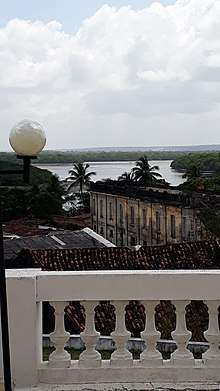
Sports
Stadiums
Soccer
João Pessoa provides visitors and residents with various sport activities.
American football
Kayaking
Very Realized on Bessa beach, To reach the 4 km of coral in the blue sea of the "Caribessa", tourists and practitioners can admire the beauties around it.[34]
Windsurfing
The practice of windsurfing is common on the beaches of the city of João Pessoa.[35]
Sailing
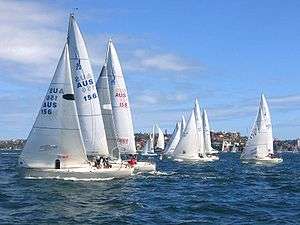
Realized in the Natural Pools of Seixas beach, on the most extreme eastern beach of the americas, where the sun rises first, the tourist contemplates the harmony between the blue of the sky and the green of the sea in the capital of Paraíba, and reveals fascinating scenarios.[36]
Surfing

Cradle of great surfers with national prominence, the Paraíba has winning athletes in the most important disputes of the sport.[37]
Diving
The coastline of João Pessoa, home to three of the most visited shipwrecks in the Northeast, are mainly sought after by nautical tourism enthusiasts and divers adventurers: Queimado, Alice and Alvarenga are considered of rare beauty and still maintain intact areas taken by algae and living beings from the bottom of the sea.[38]
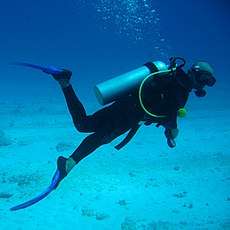
- Alvarenga Shipwreck : It is a type of vessel that was used to transport supplies to ships and wrecked 6 miles from the tip of Bessa's beach, 20 meters deep. It remains whole measuring 20 meters in length by 5 meters in the mouth. It is possible to penetrate the small bow and stern compartments safely. On the prow we can still see the winch that picked up the anchor. It is also common to find large stingrays and large shoals of fish, such as the top cock and the hook.[39]
- Burnt Shipwreck : The Erie J.N.Y is an American steam of 2,000 tons. He had left Rio de Janeiro with 24,900 bags of coffee destined for the United States. On January 2, 1873, at 2 am, it caught fire and sank (so it was known as "Burned"). Passengers and crew were saved.
- Wreck Alice: Alice is a Brazilian steam which was built in 1866 and measured 53 meters long by 6.6 meters. He was chartered by the government to transport Brazilian troops in the Paraguayan war. On March 30, 1869, Prince Emperor Gaston d'Orleans (Count d'Eu) took his place to take command of the Brazilian Army; Alice was shipwrecked in 1911.
Today it is 3.5 miles from the tip of Bessa beach and is 12 meters deep. The bow is its most entire part, 7.5 meters from the surface.[40]
Notes
References
- "Brazilian Institute of Geography and Statistics" (PDF) (in Portuguese). 2018. Retrieved March 6, 2019.
2018 Estimates of Population
- https://www.macrotrends.net/cities/20230/joao-pessoa/population
- "Joao Pessoa: Brazil". Encyclopaedia Britannica. Retrieved April 22, 2020.
- ESTAÇÃO CIÊNCIA, CULTURA e ARTES (in Portuguese). joão pessoa, Brazil: E.C.C.A. 2006. ISBN 85-240-3919-1. Archived from the original (PDF) on December 24, 2007. Retrieved January 10, 2008.
- "Unesco Creative City title puts João Pessoa on the world tourist route through folk art". City Hall of João Pessoa. November 3, 2017. Archived from the original on January 12, 2019. Retrieved August 29, 2018.
- "Mermaids from Penha". Secretary of Tourism of the Municipality of João Pessoa. Retrieved August 29, 2018.
- "História de João Pessoa". UFPB(Federal University of Paraiba). Archived from the original on March 12, 2019. Retrieved June 6, 2019.
- "Quatro séculos de história". PREFEITURA MUNICIPAL DE JOÃO PESSOA. Archived from the original on June 7, 2019. Retrieved June 6, 2019.
- "Um pouco da sua história". Secretary of Tourism of the Municipal Government of João Pessoa. Archived from the original on May 6, 2019. Retrieved June 6, 2019.
- "Introducing João Pessoa". Lonely Planet. Archived from the original on May 12, 2014. Retrieved May 10, 2014.
- "Cidade mais verde? Extremo oriental? Saiba o que é verdade sobre João Pessoa" (in Portuguese). G1.
- "Temperatura Média Compensada (°C)" (in Portuguese). Brazilian National Institute of Meteorology. 1961–1990. Archived from the original on August 8, 2014. Retrieved August 5, 2014.
- "Temperatura Máxima (°C)" (in Portuguese). Brazilian National Institute of Meteorology. 1961–1990. Archived from the original on August 8, 2014. Retrieved August 5, 2014.
- "Temperatura Mínima (°C)" (in Portuguese). Brazilian National Institute of Meteorology. 1961–1990. Archived from the original on August 8, 2014. Retrieved August 5, 2014.
- "Precipitação Acumulada Mensal e Anual (mm)" (in Portuguese). Brazilian National Institute of Meteorology. 1961–1990. Archived from the original on August 8, 2014. Retrieved August 5, 2014.
- "Número de Dias com Precipitação Mayor ou Igual a 1 mm (dias)". Brazilian National Institute of Meteorology. Archived from the original on August 27, 2014. Retrieved August 5, 2014.
- "Insolação Total (horas)". Brazilian National Institute of Meteorology. Archived from the original on August 8, 2014. Retrieved August 5, 2014.
- "Umidade Relativa do Ar Média Compensada (%)". Brazilian National Institute of Meteorology. Archived from the original on August 8, 2014. Retrieved August 5, 2014.
- "Temperatura Máxima Absoluta (ºC)". Brazilian National Institute of Meteorology (Inmet). Retrieved August 5, 2014.
- "Temperatura Mínima Absoluta (ºC)". Brazilian National Institute of Meteorology (Inmet). Retrieved August 5, 2014.
- Síntese de Indicadores Sociais 2000 (PDF) (in Portuguese). João Pessoa, Brazil: IBGE. 2000. ISBN 85-240-3919-1. Archived from the original on June 14, 2011. Retrieved January 31, 2009.
- "Religion in João Pessoa by IBGE". Archived from the original on March 23, 2015. Retrieved July 29, 2009.
- "João Pessoa in Brazil". Footprint Travel Guides. Archived from the original on August 29, 2015. Retrieved March 29, 2015.
- "João Pessoa". CBTU-Brazilian company of urban trains. Archived from the original on August 30, 2018. Retrieved August 29, 2018.
- GDP (PDF) (in Portuguese). João Pessoa, Brazil: IBGE. 2005. ISBN 85-240-3919-1. Archived from the original (PDF) on October 2, 2008. Retrieved July 18, 2007.
- per capita income (PDF) (in Portuguese). João Pessoa, Brazil: IBGE. 2005. ISBN 85-240-3919-1. Archived from the original (PDF) on October 2, 2008. Retrieved July 18, 2007.
- "MUNICIPALITY OF JOÃO PESSOA". cidade-brasil. Archived from the original on August 27, 2018. Retrieved September 5, 2018.
- "Cities-Sisters – João Pessoa and Pompano Beach". Gazeta News. March 24, 2014. Archived from the original on September 5, 2018. Retrieved September 5, 2018.
- "Bica Natural History Museum". Archived from the original on January 11, 2019. Retrieved August 28, 2018.
- "Museum Foundation house of Jose Américo". Archived from the original on August 29, 2018. Retrieved October 5, 2019.
- "Hotel Globo". Paraiba Criativa. Retrieved August 30, 2018.
- Hévilla Wanderley (January 2, 2017). "10 years of Espectros: review in photos the decade of the best team in the Northeast". Globo Esporte. Archived from the original on September 6, 2018. Retrieved September 5, 2018.
- Hévilla Wanderley (January 4, 2017). "10 anos de Espectros: passeie pela história do time a partir de seus vultos". Globo Esporte. Archived from the original on January 6, 2017. Retrieved September 5, 2018.
- "Caiaque". Secretary of Tourism of the Municipality of João Pessoa. Archived from the original on October 3, 2018. Retrieved October 2, 2018.
- "windsurf". Secretary of Tourism of the Municipality of João Pessoa. Archived from the original on October 3, 2018. Retrieved October 2, 2018.
- "VELA". Secretary of Tourism of the Municipality of João Pessoa. Archived from the original on October 3, 2018. Retrieved October 2, 2018.
- "SURF". Secretary of Tourism of the Municipality of João Pessoa. Archived from the original on October 3, 2018. Retrieved October 2, 2018.
- "mergulho". Secretary of Tourism of the Municipality of João Pessoa. Archived from the original on October 3, 2018. Retrieved October 2, 2018.
- "Naufrágio Alvarenga". Secretary of Tourism of the Municipality of João Pessoa. Archived from the original on October 3, 2018. Retrieved October 2, 2018.
- "Naufrágio Alice". Secretary of Tourism of the Municipality of João Pessoa. Archived from the original on October 3, 2018. Retrieved October 2, 2018.
External links

- Official Promotional video of João Pessoa | English

